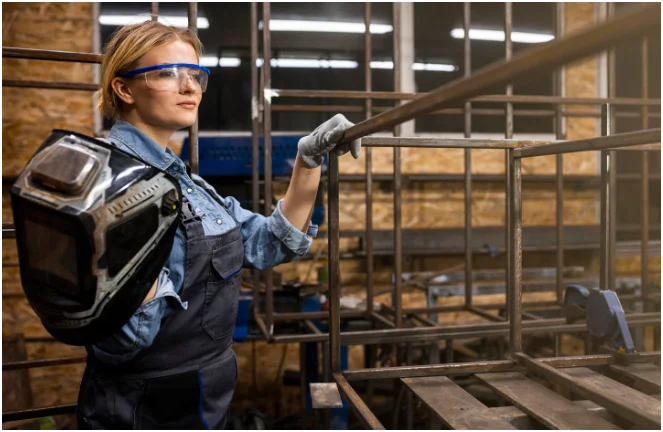When most people think about the products they use every day—whether it’s a chair, a car, or a piece of gym equipment—they rarely stop to consider how those products are made. Behind the finished item lies a journey of design, materials, and manufacturing techniques that transform raw resources into durable, functional goods. One of the most critical stages in that journey is fabrication.
Fabrication may not always get the spotlight, but it is the backbone of modern manufacturing. It is the process that gives products their shape, strength, and usability. Without it, industries ranging from construction to healthcare would not have the reliable tools, fixtures, and equipment they depend on.
What Is Fabrication?
In simple terms, fabrication is the process of shaping raw materials—most commonly metals—into finished parts or structures. It involves cutting, bending, welding, and assembling components to create items that meet specific requirements.
Think of fabrication as the difference between a pile of steel sheets and a finished bridge, or between loose aluminium panels and a sturdy cubicle frame. It is not just about joining pieces together—it’s about ensuring that those pieces are designed and built to withstand daily use, environmental stress, and the test of time.
For example, modern metal fabrication combines advanced machinery, like CNC laser cutters and robotic welders, with traditional techniques, such as manual welding and presswork. This blend of old and new methods ensures that products are not only strong but also precise and cost-effective.
Why Fabrication Is So Important
Fabrication is often considered a “hidden process” because end users rarely see it, yet its impact is everywhere. Here’s why it matters so much:
1. Strength and Durability
Fabricated products are designed to handle heavy loads, resist wear and tear, and provide long service lives. For example, fabricated steel beams support buildings, while fabricated aluminium parts keep vehicles lightweight but strong.
2. Precision and Fit
A key advantage of modern fabrication is the ability to achieve extremely precise tolerances. Using CNC machining and laser cutting, parts can be made to fit perfectly, ensuring that assemblies are secure and reliable.
3. Customization
Fabrication allows manufacturers to create parts tailored to unique designs. Whether it’s a custom bracket for a cubicle partition or a unique frame for industrial equipment, fabrication offers flexibility that mass production methods can’t always match.
4. Cost Efficiency
While fabrication may sound complex, it often reduces costs in the long run. Precise fabrication minimizes waste, improves efficiency, and creates durable parts that require less frequent replacement.
5. Innovation Enabler
New product designs in industries such as renewable energy, medical devices, and aerospace all rely on advanced fabrication. Without the ability to cut, weld, and shape materials to exact specifications, innovation would be limited.
Everyday Examples of Fabrication at Work
To truly understand the importance of fabrication, it helps to look at examples in everyday life:
- Architecture and Construction – From staircases and railings to structural frameworks, fabrication ensures buildings are safe, functional, and stylish.
- Transportation – Cars, trains, and airplanes rely heavily on fabricated metal parts, from engine components to body panels.
- Public Facilities – Washroom cubicles, lockers, and storage systems often use fabricated steel or aluminium hardware for durability in high-traffic spaces.
- Furniture and Fixtures – Chairs, tables, and shelving units often start as fabricated metal frames before being finished with wood, glass, or plastics.
- Medical Equipment – Fabricated stainless steel components are critical in surgical tools, hospital beds, and diagnostic machines.
Every one of these examples highlights the role of fabrication in creating products that must perform reliably, often under challenging conditions.
The Processes Behind Fabrication
Fabrication isn’t a single action—it’s a series of processes that work together to transform raw materials into finished parts. Some of the most common include:
- Cutting – Using saws, plasma cutters, or laser machines to cut raw materials into desired shapes.
- Bending and Forming – Shaping sheets or rods of metal into angles and curves with press brakes or rollers.
- Welding – Joining metal parts permanently, using techniques such as MIG or TIG welding.
- Machining – Removing material from a workpiece with CNC machines to achieve precision shapes and finishes.
- Assembly – Combining fabricated parts with fixings, brackets, or fasteners into complete products.
These steps vary depending on the project, but together they ensure that the final product is both functional and strong.
The Future of Fabrication
Fabrication continues to evolve with technology. Automation and robotics are making processes faster and more consistent, while advances in materials science introduce stronger, lighter alloys. Additive manufacturing (3D printing) is also beginning to complement traditional fabrication, especially for prototyping and complex shapes.
Sustainability is another growing trend. Fabricators are increasingly focused on reducing waste, recycling scrap materials, and designing products that last longer to cut down on replacements. This makes fabrication not just an economic necessity, but also an environmental responsibility.
Conclusion
Fabrication may remain a behind-the-scenes process, but its importance cannot be overstated. It is the reason our buildings stand tall, our vehicles run safely, and our everyday products last through years of use. By combining strength, precision, and innovation, fabrication ensures that the products we rely on are not only functional but also built to last.
Next time you walk into a building, use public facilities, or even sit on a chair, remember: fabrication is the hidden force that makes it all possible.
